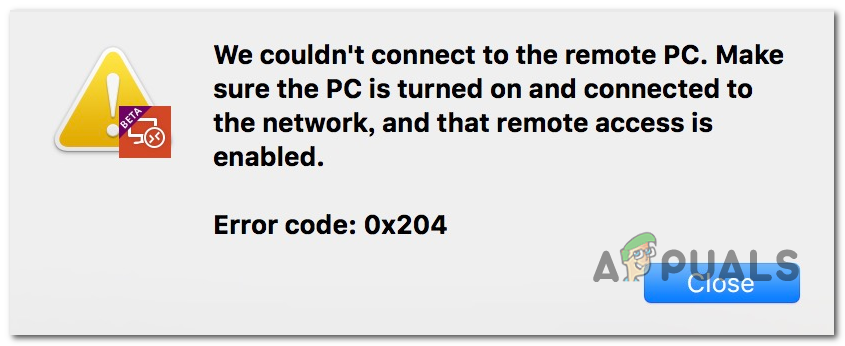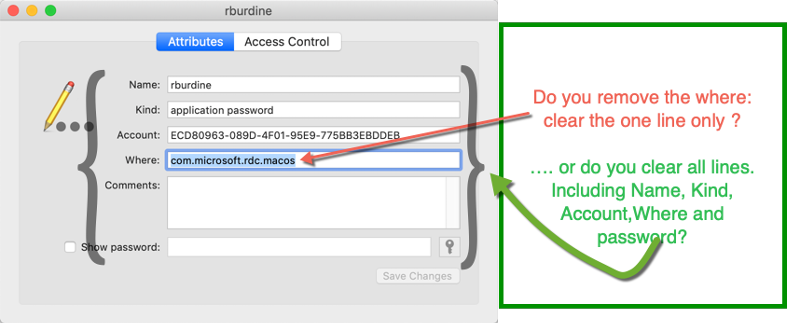Microsoft Remote Desktop Delete User Account
Select Start Settings Accounts Other users. Select the person's name or email address, then select Remove. Read the disclosure and select Delete account and data. Note that this will not delete the person's Microsoft account, but it will remove their sign-in info and account data from your PC. Add work or school accounts to your PC. It is a command-line utility that you can use to delete user profiles on a local or remote computers running Windows 2000, Windows XP, and Windows Server 2003. User profiles can grow large and may take up considerable disk space, especially if there are several users using one computer. Open the Microsoft Remote Desktop app. (see screenshot below) 2. Click/tap on the overflow menu (.) button next to the name (ex: 'My Laptop') of the Remote Desktop connection you want to delete, and click/tap on Remove. (see screenshot below) 3. When finished, you can close the Remote Desktop app if you like. Oct 10, 2020 In addition to setting a password, we also can disable blank password check to allow Remote Desktop connection to login through a user account without password. Step 1: Type gpedit.msc in Start Search box and hit enter, double-click the best match Microsoft Common Console Document to open it.
 -->
-->This article describes User Account Control (UAC) and remote restrictions.
Applies to: Windows Vista
Original KB number: 951016
Introduction
User Account Control (UAC) is a new security component of Windows Vista. UAC enables users to perform common day-to-day tasks as non-administrators. These users are called standard users in Windows Vista. User accounts that are members of the local Administrators group will run most applications by using the principle of least privilege. In this scenario, least-privileged users have rights that resemble the rights of a standard user account. However, when a member of the local Administrators group has to perform a task that requires administrator rights, Windows Vista automatically prompts the user for approval.
How UAC remote restrictions work
To better protect those users who are members of the local Administrators group, we implement UAC restrictions on the network. This mechanism helps prevent against loopback attacks. This mechanism also helps prevent local malicious software from running remotely with administrative rights.
Local user accounts (Security Account Manager user account)
When a user who is a member of the local Administrators group on the target remote computer establishes a remote administrative connection by using the net use *remotecomputerShare$ command, for example, they won't connect as a full administrator. The user has no elevation potential on the remote computer, and the user cannot perform administrative tasks. If the user wants to administer the workstation with a Security Account Manager (SAM) account, the user must interactively log on to the computer that is to be administered with Remote Assistance or Remote Desktop, if these services are available.
Domain user accounts (Active Directory user account)
A user who has a domain user account logs on remotely to a Windows Vista computer. And, the domain user is a member of the Administrators group. In this case, the domain user will run with a full administrator access token on the remote computer, and UAC won't be in effect.
Note
This behavior is not different from the behavior in Windows XP.
How to disable UAC remote restrictions
Important
This section, method, or task contains steps that tell you how to modify the registry. However, serious problems might occur if you modify the registry incorrectly. Therefore, make sure that you follow these steps carefully. For added protection, back up the registry before you modify it. Then, you can restore the registry if a problem occurs. For more information about how to back up and restore the registry, see How to back up and restore the registry in Windows.
To disable UAC remote restrictions, follow these steps:
Click Start, click Run, type regedit, and then press ENTER.
Locate and then click the following registry subkey:
HKEY_LOCAL_MACHINESOFTWAREMicrosoftWindowsCurrentVersionPoliciesSystemIf the
LocalAccountTokenFilterPolicyregistry entry doesn't exist, follow these steps:- On the Edit menu, point to New, and then select DWORD Value.
- Type LocalAccountTokenFilterPolicy, and then press ENTER.
Right-click LocalAccountTokenFilterPolicy, and then select Modify.
In the Value data box, type 1, and then select OK.
Exit Registry Editor.
Did this fix the problem
Check whether the problem is fixed. If the problem isn't fixed, contact support.

UAC remote settings
The LocalAccountTokenFilterPolicy registry entry can have a value of 0 or 1. These values change the behavior of the registry entry to the one described in the following table.
| Value | Description |
|---|---|
| 0 | This value builds a filtered token. It's the default value. The administrator credentials are removed. |
| 1 | This value builds an elevated token. |
I've had issues with the profiling service taking a dump on users running live setups; i.e. standard PC workstations connected to an AD domain with redirected desktop and documents.
Same as you describe, user logs in, Windows puts them on a temporary profile. After two hours when the user finally notices (because most are like that), I get the call, walk on over, open up REGEDIT, see the GUID and GUID.bak.
The fix, delete the GUID. Rename GUID.bak to GUID. Reboot. See if it happens again. I don't think it's ever immediately happened again. It's been a transient issue in our environment for years now, though it seems to have gotten better. What causes it, I unfortunately don't know. Bad thread handling in the profile manager on startup? Bad lock management? It's something in the programming for the Windows team to iron out one of these days.
Microsoft Remote Desktop Remove User Account
I don't think I've ever had it happen in RDS. I'll have to check with my coworker on that one because I vaguely remember she had to deal with it once in RDS. If you uncover something concrete though, I'd love to hear it.